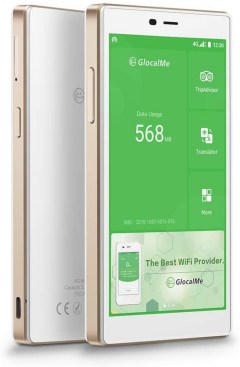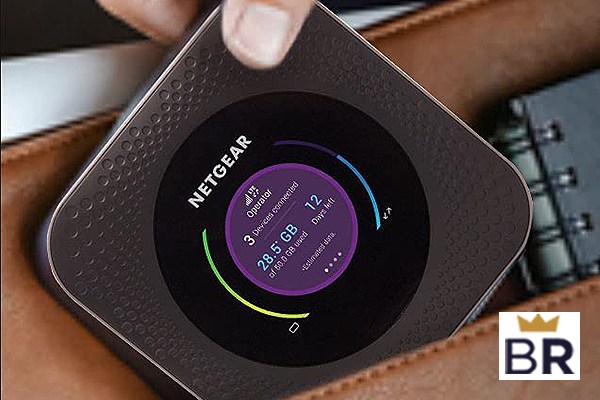Buying guide for Best mobile hotspots
WiFi can be hard to come by sometimes, and in those cases, the best option is often a mobile hotspot. Mobile hotspots are small black boxes that have one job: they connect to a cellular data provider’s network and use it to power a standalone WiFi access point. With a mobile hotspot, you can provide WiFi for multiple devices and even network them together — it’s basically a portable wireless router that uses carrier data.
Naturally, mobile hotspots come with monthly subscription fees, but most wireless providers will give you a discount if you add it to your existing smartphone data plan.
Whether you need to make sure everyone on your family vacation gets good WiFi, or you travel alone with multiple devices that need to connect to the web simultaneously, a mobile hotspot guarantees you’ve always got an internet connection.
The right mobile hotspot for you will vary on a few different factors, like your current wireless provider and the number of devices you’ve got. Here’s everything you need to know to find the perfect hotspot.
Key considerations
Which wireless carrier do you currently use for your smartphone?
It’s important to buy a mobile hotspot that will work with your current wireless carrier (otherwise, you won’t be able to get online). AT&T and T-Mobile both use GSM networks, while Verizon uses a CDMA network. Most mobile hotspots are built for GSM networks, so if you’re a Verizon user, you’ll need to find one that’s explicitly labeled as compatible with your network.
How many users and devices will be accessing your mobile hotspot?
Most mobile hotspots are only made to support roughly 5 devices at a time, although more expensive models can support as many as 15 active simultaneous connections. Estimate the total number of devices you expect might use your mobile hotspot and buy one that can keep up.
When shopping for a mobile hotspot, it’s important to find a model that will be supported by your carrier. When assessing mobile hotspots, we consider the number of carriers each model is compatible with.
When researching mobile hotspots for recommendation, we note whether each product offers any unique or handy features, such as a waterproof design.
Speed is a critical consideration for many when shopping for a mobile hotspot. When researching hotspots, we look for products that are compatible with LTE speeds, which are currently the fastest mobile networks.
While the majority of hotspots are designed to support around five devices at a time, some high-end models support more. We research how many devices each hotspot can reliably support.
If you frequently travel or want to be able to use your hotspot internationally, it can be beneficial to get a hotspot with global plan options. When researching mobile hotspots, we consider whether various models are suitable for international use.
Battery life varies across products, and long battery life is important to many consumers who use their hotspots for work. We consider the battery life and charging time of each mobile hotspot in our research.
Some hotspots are designed with USB ports that allow for faster charging and the ability to hardwire a computer’s connection to mobile data instead of WiFi. We consider whether each hotspot we evaluate includes USB ports.
When evaluating mobile hotspots, we look at design elements, such as size and touchscreen operation, that impact portability and functionality.
User-friendliness and ease of setup are important factors when selecting a mobile hotspot. We carefully evaluate how intuitive each model is and how easy it is to set up and connect with devices.
When using a mobile hotspot, a reliable connection is critical. We evaluate the reliability and consistency of each model we consider.
Features
There’s a lot of variety across the mobile hotspot market, so it pays to know ahead of time what features you want. Here are the most critical features to keep tabs on.
Pay-as-you-go support
All of the big wireless carriers — and plenty of the little ones, too — offer month-to-month data plans that don’t require a contract. Your mobile hotspot is going to need to be added to a wireless plan, and if you don’t want to sign a service contract, you’ll need to find a mobile hotspot that’s compatible with a pay-as-you-go plan. Which devices are approved for these plans will vary by carrier, so if you plan to pay monthly, you’ll need to make sure to buy a mobile hotspot that your carrier supports.
USB 3.0
Some mobile hotspots have USB ports, which you can use to hardwire your computer’s connection to mobile data instead of using WiFi. That can be handy for getting extra-fast speeds, but the real benefit of a USB 3.0 port is how fast it can charge your hotspot. Pick up a mobile hotspot that can charge via USB 3.0, so you’re never stuck waiting around for it to recharge.
LTE speeds
Currently, the fastest mobile networks run at LTE speeds, but last-generation networks were considerably slower (if you lived through the days of 3G, you probably remember how painfully slow the web could be). Watch out for mobile hotspots that only operate at 3G speeds, and avoid them like the plague — and make sure any mobile hotspot you buy is compatible with LTE speeds.
Mobile hotspot prices
Inexpensive
Mobile hotspots for GSM networks like AT&T’s or T-Mobile’s usually run between $50 and $100. Models in this range offer full support for LTE speeds domestically and usually support five simultaneous connections. If you’re an AT&T or T-Mobile customer and you need the simplest option for getting WiFi anywhere, you won’t need to spend much.
Mid-range
For a mobile hotspot for Verizon, you’ll need to spend anywhere between $100 and $150. Models in this price range often include fancier features like touchscreens or high-capacity batteries.
Expensive
Mobile hotspots that cost more than $200 are typically global models, meaning they’re designed to work in any country around the world. If you frequently travel the world and often find yourself needing data in foreign countries, you’ll need to spend a considerable amount on the right mobile hotspot. If you’re only going to be using your mobile hotspots domestically, you don’t need to spend as much.
Staff TIp
While it’s possible to use a smartphone as a mobile hotspot — both Android and iOS will let you set up your own impromptu WiFi network, so other devices can piggyback from their signal — we don’t recommend doing so on an extended basis. Smartphone hotspots usually struggle to connect more than one or two other devices, and they often don’t deliver speeds as fast as proper mobile hotspots do.
STAFF
BestReviews
Tips
-
Check your smartphone to see how much cellular data you typically consume over time. Both Android and iOS keep tabs on how much data you use when you’re not on WiFi, so it’s simple to check in on your data usage if you need to. Check your smartphone’s settings to get a sense of how much data you use in a given week or month, and then use that for information about which mobile hotspot you buy and the accompanying data plan you sign up for.
-
Buy a carrying case. Mobile hotspots have internal components that you’ll want to keep safe, so pick up a carrying case to protect it from the occasional fall. Cases are cheap, and peace of mind is priceless, so it’s an easy decision.
- If you’re planning on taking your mobile hotspot somewhere you may not be able to recharge it, buy a power bank to take with you. Power banks are basically just big batteries for USB devices, and they store a charge that can completely restore a phone, tablet, or even a mobile hotspot. Make sure you’ve always got a backup option for when any of your devices’ batteries run out.
FAQ
Q. Can I use a mobile hotspot as my home’s primary internet connection?
A. If you’re only connecting a handful of devices, yes. If you plan on connecting a full home’s worth of devices or multiple devices for other users, it’s not a great idea. Mobile hotspots are ideal for situations where you need fast WiFi in a pinch — like at hotels or airports — but they’re not really designed to do all of the heavy-lifting of a proper home internet connection. (Even if they could, wireless providers would slow down your data speeds if you consume too much from them, in a common practice known as throttling.)
Q. Will I need to buy a new SIM card for my mobile hotspot?
A. Probably. Subscriber Identity Module, or SIM, cards used to be only for some wireless carriers, but they’re now required for any mobile device on a carrier data plan. You’ll need to buy a SIM card for your mobile hotspot directly from your wireless provider (so that it can be registered to your account), but they’re usually less than $20.
Q. Will a mobile hotspot get better reception than my smartphone?
A. It depends, but probably not. Mobile hotspots use cellular radios just like your smartphone, and performance will always depend on reception. If you have a particularly old phone with outdated hardware, a mobile hotspot may give you a nice boost, but for the most part, your mobile hotspot will get the same reception your smartphone does — for better or for worse.




















































